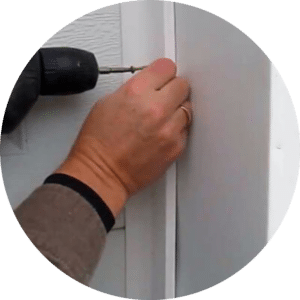


When it comes to protecting your home from the elements, a crucial component that often goes overlooked is the garage door weather stripping. This simple yet effective solution plays a vital role in providing insulation and sealing gaps around your garage door, helping to maintain a comfortable indoor temperature and prevent unwanted drafts, moisture, and pests from entering your garage.
Garage door weather stripping is a flexible material that is installed along the edges of your garage door, creating a seal between the door and the frame. It acts as a barrier against rain, wind, and extreme temperatures, ensuring that your garage remains well-insulated and protected from the elements. By preventing air leaks and minimizing energy loss, weather stripping can also contribute to reducing your energy bills.
Weather stripping is primarily used to seal gaps and prevent the infiltration of outdoor elements into your garage. It serves as a barrier against rain, wind, dust, insects, and even noise. By creating a tight seal, weather stripping prevents drafts from entering your garage, which can significantly impact the indoor temperature and overall comfort. It also plays a crucial role in keeping out moisture, which can lead to mold and mildew growth. Additionally, weather stripping helps to reduce noise transmission, making your garage a quieter space.
Another important function of weather stripping is energy conservation. By sealing gaps around your garage door, it prevents air leakage and minimizes heat transfer. This means that your HVAC system doesn’t have to work as hard to maintain a comfortable temperature, resulting in reduced energy consumption and lower utility bills. Weather stripping is an essential component for those who use their garage as a workshop, hobby room, or even an additional living space, as it helps to create a more comfortable and energy-efficient environment.
A variety of materials can be used for garage door weather stripping, each with its own advantages and suitability for different climates and garage door types. The most common materials include:
Vinyl Weather Stripping: Vinyl is a popular choice for weather stripping due to its affordability, durability, and ease of installation. It is resistant to UV rays, moisture, and extreme temperatures, making it suitable for various climates. Vinyl weather stripping is available in different styles, such as adhesive-backed strips or bulb-shaped gaskets, allowing for a customized fit.
Rubber Weather Stripping: Rubber is another versatile material commonly used for weather stripping. It offers excellent flexibility and durability, ensuring a tight seal against drafts and moisture. Rubber weather stripping comes in various forms, including adhesive-backed strips, tubular gaskets, and flaps. It is particularly effective in extreme temperature conditions, as it remains pliable and resilient.
Felt Weather Stripping: Felt weather stripping is often used for lightweight garage doors or as a temporary solution. It is an inexpensive option that is easy to install and provides a decent seal against drafts. However, felt weather stripping may not be as durable as other materials and may require regular replacement, especially in high-traffic areas.
Metal Weather Stripping: Metal weather stripping, typically made of aluminum or stainless steel, offers superior durability and longevity. It is suitable for heavy-duty applications and provides excellent protection against drafts, moisture, and pests. Metal weather stripping is often used for commercial or industrial garage doors where robust sealing is required.
Yes, garage doors do need weather stripping to ensure optimal insulation and protection against the elements. Without weather stripping, gaps and cracks around the garage door can allow drafts to enter, leading to energy loss, increased utility bills, and discomfort. These gaps can also allow rainwater, dust, pests, and noise to infiltrate your garage, potentially causing damage and inconvenience.
Weather stripping is especially crucial for attached garages that share a wall with your home, as it helps to maintain the indoor temperature and prevent the transfer of cold or hot air into your living space. It also plays a significant role in preventing moisture buildup, which can lead to mold and mildew growth, and keeps out unwanted pests that may seek shelter in your garage.
By installing weather stripping, you can create a barrier between the outdoors and your garage, ensuring that it remains well-insulated, energy-efficient, and protected from the elements. It is a relatively simple and cost-effective solution that offers long-term benefits.
Installing weather stripping on your garage door is a straightforward process that can be done by homeowners with basic tools and DIY skills. Here are the general steps to follow:
By following these steps, you can effectively install weather stripping on your garage door and enjoy the benefits of improved insulation, energy efficiency, and protection against the elements.
Garage door weather stripping is a vital component in maintaining a well-insulated and protected garage. It serves as a barrier against drafts, moisture, pests, and noise, ensuring a comfortable and energy-efficient space. By choosing the right materials and properly installing weather stripping, you can enjoy the benefits of reduced energy consumption, lower utility bills, and improved overall comfort. Take the time to assess your garage door’s weather stripping needs and make the necessary upgrades to enhance the insulation and protection of your garage. With a well-sealed garage door, you can create a more functional and comfortable space while also contributing to a greener and more sustainable home.
Superior Garage Door Repair
(888) 342-6664
247superiorgaragedoor.com
Copyright © 2017-2023 Superior Garage Door Repair | All rights reserved.
